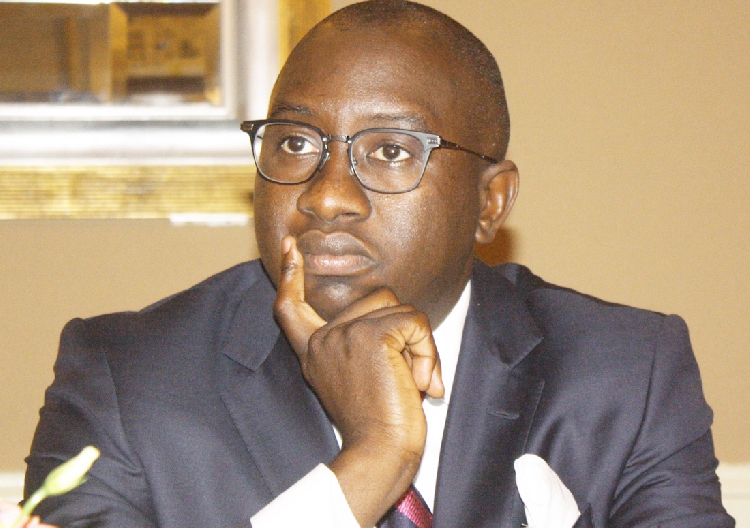By Shinovene Immanuel | 23 March 2017
REPORT by the attorney general paints government as clueless about many key aspects of the oil storage facility under construction at Walvis Bay, including the absence of a plan to recover the N$5,5 billion being pumped into the project.
The report, part of a cache of confidential documents compiled by attorney general Sacky Shanghala and obtained by The Namibian from treasury sources, details how key questions about the project remain unanswered.
When confronted with the report, attorney general Shanghala declined to comment for this article.
Questions raised in the report revolve around who would own the assets of the facility, what would be the operating model of the facility, what would the cost recovery plan be, and what volumes of fuel products would be stored at the facility.
Other questions concern operating costs, and how the multibillion-dollar project would impact the pockets of the public.
“To the best of my knowledge, there is no operating philosophy that has been devised and agreed for the operation of the (storage) facilities. This is a concern, and points to a lack of preparedness and capacity for the commissioning of the facilities. My advice is to address this matter urgently,” Shanghala stated in a document dated 10 February 2017.
By December 2016, two years after commencing the project, government did not know how it would recover the N$5,5 billion being invested in the project, the attorney general said.
“There was (and still is) no cost recovery mechanism in place. While the NEF (National Energy Fund) would be the primary borrower for the project, treasury acted as guarantor to these loans, which loans were only secured by way of sovereign/government guarantee,” he said.
Shanghala has been heavily criticised in the past over a raft of perceived bad pieces of advice since becoming government’s top legal adviser in 2015, but his supporters have said that the attorney general deserved credit for intervening in the fuel storage facility deal, the cost of which has been escalating.
In addition, Shanghala has also pushed for an investigation into the role of his associates, National Planning Commission permanent secretary Leevi Hungamo and politically connected businessman Vaino Nghipondoka, in the N$5,5 billion project.
The attorney general stated that the cost of the project has ballooned uncontrollably and could, if not checked, result in significant damage and avoidable financial losses to state coffers and the country.
“Left unchecked, in order for the employer (government) to recover its funds, there will be runaway costs of fuel for the consumer, with potentially negative wide-ranging national economic effects. Cabinet is required to act to avoid this,” Shanghala cautioned.
The document shows that Shanghala preferred that the facility be placed under the finance ministry’s control until the N$5,5 billion has been repaid.
Namcor has also pushed to run the facility, but the attorney general was of the opinion that this would create a monopoly as Namcor already handles the distribution of petroleum products across the country.
According to the report, Shanghala suggested that the state should investigate the creation of a new company, falling under NEF or the finance ministry.
This new entity’s board chairperson would be nominated by treasury, and deputised by a director nominated by the attorney general, while the other directors would be the managing directors of Namcor, Namport, NEF, TransNamib and the CEO of the Walvis Bay municipality. No mention is made of private sector involvement at board level, or of qualified directors drawn from the public.
The report also suggested how government could invest in the facility. Apart from the existing fuel levy paid by motorists, and which has generated over N$270 million in 2015, other levies are being proposed. One would be called the infrastructural levy, and would last for 15 years.
“This cost will eventually be passed on to consumers,” Shanghala stated.
Other levies would be the marine facility fees, which would be paid by those who used the offshore facilities, and would be applicable for as long as the storage facility was operational.
Government renegotiated the construction costs of the storage facility last year after it emerged that the price increased from N$3,7 billion in 2014 to N$5,5 billion in 2016.
The construction contract was awarded to CRB, a joint venture between China Harbour Engineering Company, the Roads Contractor Company (RCC) and Vaino Nghipondoka’s Babyface Civils.
Shanghala claimed in the report that the renegotiations with the contractor have resulted in savings to government of over N$200 million. Shanghala declined to comment when contacted about the report yesterday.
Although foreign exchange fluctuations have been blamed for the high construction costs of the storage facility, other sources have cast blame in the direction of Prime Minister Saara Kuugongelwa-Amadhila, who was the finance minister when the contract was awarded.
Kuugongelwa-Amadhila, who declined to comment on the allegations last year, allegedly rejected the advice of some state officials to put in place a strategy to reduce exposure to foreign exchange market fluctutations.
President Hage Geingob has also recently questioned how the construction costs of the fuel storage facility have ballooned to N$5,5 billion.
“Look at the storage facility. Too many people were reckless. We are not targeting anyone. We want blacks to come into the mainstream economy, but they must not take shortcuts,” Geingob pointedly told state-owned New Era on Monday.






